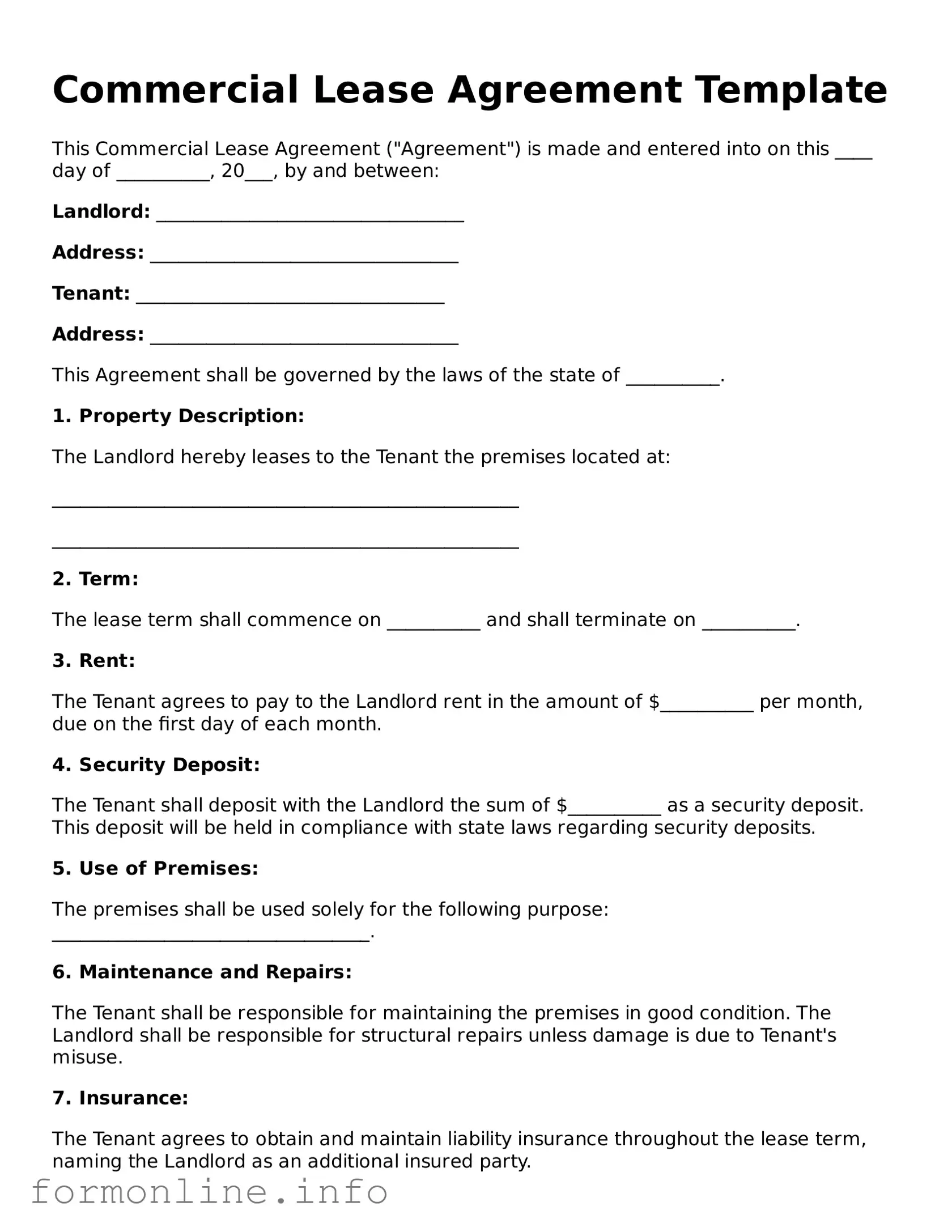Commercial Lease Agreement Template
This Commercial Lease Agreement ("Agreement") is made and entered into on this ____ day of __________, 20___, by and between:
Landlord: _________________________________
Address: _________________________________
Tenant: _________________________________
Address: _________________________________
This Agreement shall be governed by the laws of the state of __________.
1. Property Description:
The Landlord hereby leases to the Tenant the premises located at:
__________________________________________________
__________________________________________________
2. Term:
The lease term shall commence on __________ and shall terminate on __________.
3. Rent:
The Tenant agrees to pay to the Landlord rent in the amount of $__________ per month, due on the first day of each month.
4. Security Deposit:
The Tenant shall deposit with the Landlord the sum of $__________ as a security deposit. This deposit will be held in compliance with state laws regarding security deposits.
5. Use of Premises:
The premises shall be used solely for the following purpose: __________________________________.
6. Maintenance and Repairs:
The Tenant shall be responsible for maintaining the premises in good condition. The Landlord shall be responsible for structural repairs unless damage is due to Tenant's misuse.
7. Insurance:
The Tenant agrees to obtain and maintain liability insurance throughout the lease term, naming the Landlord as an additional insured party.
8. Termination:
This Agreement may be terminated by either party with __________ days written notice.
9. Governing Law:
This Agreement shall be governed and interpreted in accordance with the laws of the State of __________.
10. Entire Agreement:
This document constitutes the entire Agreement between the parties. Any amendments must be in writing and signed by both parties.
IN WITNESS WHEREOF, the parties have executed this Agreement as of the day and year first above written.
Landlord's Signature: _______________________________ Date: ___________
Tenant's Signature: _______________________________ Date: ___________
